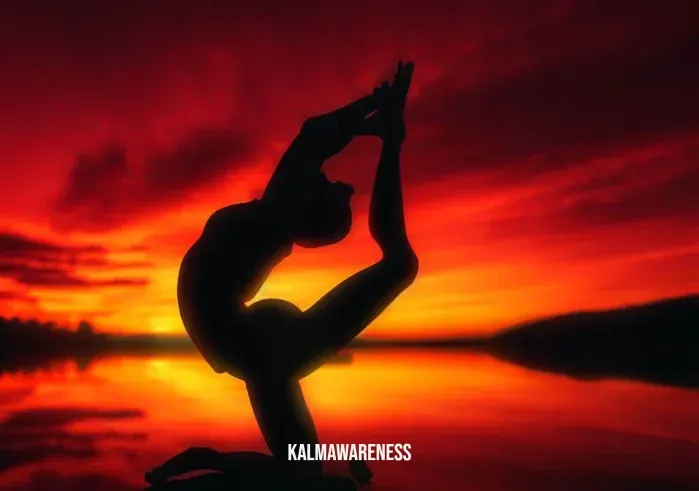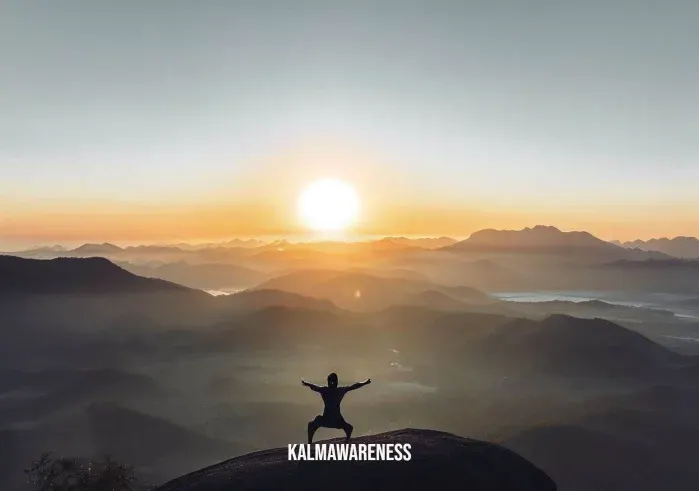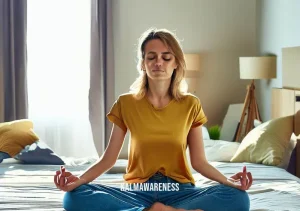The Majestic Dragon Pose
In this exhilarating article, we delve into the captivating world of yoga and explore one of its most awe-inspiring postures – the Dragon Yoga Pose. Get ready to be enchanted by the beauty and grace of this pose as we unravel its origins, explore its difficulty level, and guide you through step-by-step instructions to master it. So, let’s dive in and embrace the majesty of the Dragon Yoga Pose!
Yoga Pose Details
| Description | Explanation |
|---|---|
| Pose Name | Dragon Yoga Pose |
| Original Name | Vrikshasana (Tree Pose) |
| Difficulty Level | Intermediate |
| Pose Category | Standing Balance |
| Exercise Duration | Beginners: 30 seconds<br>Advanced: 1 minute |
Unraveling the Dragon Yoga Pose
The Dragon Yoga Pose, also known as Vrikshasana or Tree Pose, symbolizes strength, stability, and rootedness, much like the mighty ancient dragons. As you embody this majestic creature, you’ll experience a profound sense of grounding and balance.
Origins of the Dragon Pose
The roots of Vrikshasana can be traced back to ancient yoga texts, where it is often associated with the tree as a symbol of life and the interconnectedness of all living beings. Just like a tree stands firm with its roots firmly anchored into the earth, this pose enables practitioners to find their inner strength and stability.
Exploring the Difficulty Level
The Dragon Yoga Pose falls under the intermediate difficulty level. It requires a certain degree of balance and concentration, making it a perfect choice for practitioners who have a basic understanding of yoga asanas and are eager to advance their practice.
Embracing the Pose Category
The Dragon Pose belongs to the category of standing balance postures. Standing poses are the foundation of yoga practice, enhancing focus, stability, and flexibility. As you flow into this pose, you’ll experience a harmonious blend of strength and poise.
Exercise Duration
For beginners, it is recommended to hold the Dragon Yoga Pose for about 30 seconds. As you become more adept, advance your practice by extending the duration to 1 minute. This gradual progression will allow you to explore the pose’s depths and reap its full benefits.
Step-by-Step Guide
Now, let’s dive into the step-by-step instructions to gracefully embody the Dragon Yoga Pose:
- Starting Position: Stand tall on your yoga mat with your feet together and arms resting gently by your sides.
- Ground Yourself: Shift your weight onto your left foot and firmly press it into the mat. Visualize roots extending from your foot deep into the earth, anchoring you in place.
- Lift Your Right Foot: Bend your right knee and place the sole of your right foot on the inside of your left thigh. Keep your toes pointing downward.
- Find Your Balance: Engage your core muscles to maintain stability. If needed, you can use a wall or chair for support until you feel comfortable without assistance.
- Hands in Prayer: Bring your hands together in a prayer position at your heart center. Keep your gaze focused on a fixed point in front of you to enhance concentration.
- Branch Out: For an advanced variation, slowly raise your arms above your head like the branches of a tree. Keep your shoulders relaxed and chest open.
- Breathe Deeply: Inhale deeply and exhale slowly as you hold the pose. Feel the energy flowing through your body, grounding you like the roots of a tree.
- Release with Grace: Gently lower your right foot back to the ground and return to the starting position.

Embracing the Dragon Pose – Benefits, Variations, and Considerations
In this captivating continuation, we delve deeper into the enchanting world of the Dragon Yoga Pose. As we unfold the next chapters of our exploration, we will discover the myriad benefits this pose offers, explore variations tailored to different levels of experience, and shed light on the practitioners who should approach this pose with caution. So, let’s spread our wings and soar into the realm of the majestic Dragon Yoga Pose!
The Incredible Benefits of the Dragon Pose
As with many yoga postures, the Dragon Pose comes with a treasure trove of health benefits, both physical and mental. Let’s unfurl these benefits and understand how this pose can enhance your overall well-being.
- Improves Balance and Focus: Practicing the Dragon Pose challenges your balance and cultivates laser-like focus, helping you develop a deep sense of concentration.
- Strengthens Leg Muscles: The one-legged stance in this pose engages your leg muscles, including your thighs, calves, and ankles, making them stronger over time.
- Stimulates Digestion: The twisting motion involved in the Dragon Pose aids in stimulating your digestive organs, promoting healthy digestion.
- Boosts Confidence: Mastering this intermediate pose instills a sense of achievement, boosting your confidence in your yoga journey and beyond.
- Enhances Flexibility: Regular practice of the Dragon Pose opens up your hips, hamstrings, and groin, enhancing overall flexibility.
- Reduces Stress and Anxiety: Like a tranquil dragon, this pose helps calm the mind, reducing stress and anxiety levels.
- Improves Posture: The alignment required for the Dragon Pose promotes good posture and spine health.
- Increases Mind-Body Awareness: Embracing this pose nurtures a deep connection between your mind and body, fostering mindfulness.
Exploring Variations for Every Experience Level
Yoga celebrates diversity, and the Dragon Pose is no exception. Here, we present variations of this majestic posture, catering to practitioners of different experience levels:
- Beginner Variation – Supported Dragon Pose:
- Use a wall or a sturdy chair for support while practicing the pose.
- This modification helps beginners find stability and build confidence.
- Intermediate Variation – Extended Arms Dragon Pose:
- Instead of bringing your hands to your heart center, extend your arms out to the sides like wings.
- This variation challenges your balance and opens up your chest and shoulders.
- Advanced Variation – Twisted Dragon Pose:
- As you lift your leg into the pose, twist your torso towards the raised leg.
- This advanced version intensifies the twist and strengthens your core muscles.
Who Should Approach with Caution
While the Dragon Pose offers numerous benefits, it may not be suitable for everyone. Certain individuals should approach this pose with caution or avoid it altogether:
- Recent Injury or Surgery: If you have a recent injury, particularly in the legs, knees, or ankles, consult with a healthcare professional before attempting this pose.
- High Blood Pressure: Those with uncontrolled high blood pressure should avoid this pose, as it involves balance and can cause fluctuations in blood pressure levels.
- Vertigo or Dizziness: If you experience vertigo or dizziness, it’s best to skip this pose, as it requires steady focus and may exacerbate these conditions.
- Pregnancy: Pregnant individuals should avoid practicing the Dragon Pose, especially during the second and third trimesters, as it involves balance and twists.
Safety Precautions and Tips
As with any yoga practice, safety is paramount. Keep these tips in mind while practicing the Dragon Pose:
- Always warm up before attempting any yoga pose to prepare your body for the practice.
- Engage your core muscles throughout the pose to maintain stability and protect your lower back.
- Avoid pushing yourself too hard and listen to your body. Honor your limits and progress at your own pace.

Unveiling the Mystique of the Dragon Yoga Pose
In this final chapter of our enthralling journey, we immerse ourselves in the history, spiritual significance, and practical aspects of the Dragon Yoga Pose. With a deeper understanding of this majestic posture, we’ll discover how to harness its full potential, avoid common pitfalls, and explore modifications to accommodate various physical needs. Additionally, we’ll uncover poses that complement and harmonize with the captivating Dragon Pose.
The Enigmatic History of the Dragon Pose
While the exact origins of the Dragon Pose may be shrouded in mystery, its symbolic representation has been deeply rooted in ancient cultures. Throughout history, dragons have held significant symbolism across different civilizations, representing power, transformation, and the union of opposing forces. The Dragon Pose, inspired by these mythical creatures, embodies their attributes and serves as a reminder of our innate strength and courage.
Unraveling the Spiritual Significance
Beyond its physical benefits, the Dragon Pose holds spiritual significance in the world of yoga. As you flow into this pose, you are encouraged to channel the essence of a dragon: noble, fierce, and balanced. This symbolic representation reminds us of the harmony between the human and the divine, urging us to find balance and alignment in our lives.
Tips for Deepening Your Practice
To unlock the full potential of the Dragon Pose, consider these valuable tips:
- Focus on Your Breath: Concentrate on your breath during the pose. Inhale deeply, allowing your chest and lungs to expand, and exhale slowly, releasing any tension.
- Engage Your Core: To maintain stability and protect your lower back, engage your core muscles throughout the pose.
- Find Your Drishti: Fix your gaze on a steady point to enhance your focus and balance during the posture.
- Practice Mindfulness: Embrace the present moment as you embody the Dragon Pose, nurturing a sense of mindfulness.
Common Mistakes to Avoid
To ensure a safe and effective practice, steer clear of these common mistakes:
- Overarching the Back: Avoid arching your lower back excessively, as it can strain your spine. Instead, engage your core to support your back.
- Locking the Knees: Keep a slight bend in your standing leg’s knee to prevent hyperextension.
- Forcing the Pose: Respect your body’s limitations and avoid pushing yourself beyond your current level of comfort.
Modifications for Individual Needs
Yoga is a practice for all, and the Dragon Pose can be adapted to accommodate various needs:
- Injuries or Limited Flexibility: If you have injuries or limited flexibility, consider using props such as a yoga block under your raised foot for added support.
- Balance Challenges: If balancing on one leg is challenging, practice the pose with your back against a wall for additional stability.
Complementary Poses to Enhance Your Practice
Expand your yoga journey by incorporating these complementary poses to the Dragon Pose:
- Warrior II (Virabhadrasana II): This empowering standing pose builds strength in the legs and opens the chest and shoulders.
- Cobra Pose (Bhujangasana): Counterbalance the forward-leaning posture of the Dragon Pose with this gentle backbend, promoting spine flexibility.
- Half Lord of the Fishes (Ardha Matsyendrasana): Twisting poses like this one can help improve spinal mobility, complementing the twists in the Dragon Pose.
- Seated Forward Bend (Paschimottanasana): Embrace this calming stretch to relax the hamstrings and lower back after practicing the Dragon Pose.
Embrace the Power of the Dragon Pose
As we conclude this mesmerizing journey, let the Dragon Yoga Pose inspire you to embrace your inner strength and embody the majestic spirit of the mythical creature. With its roots in history and its wings reaching for the sky, the Dragon Pose offers a harmonious blend of physical and spiritual growth.





